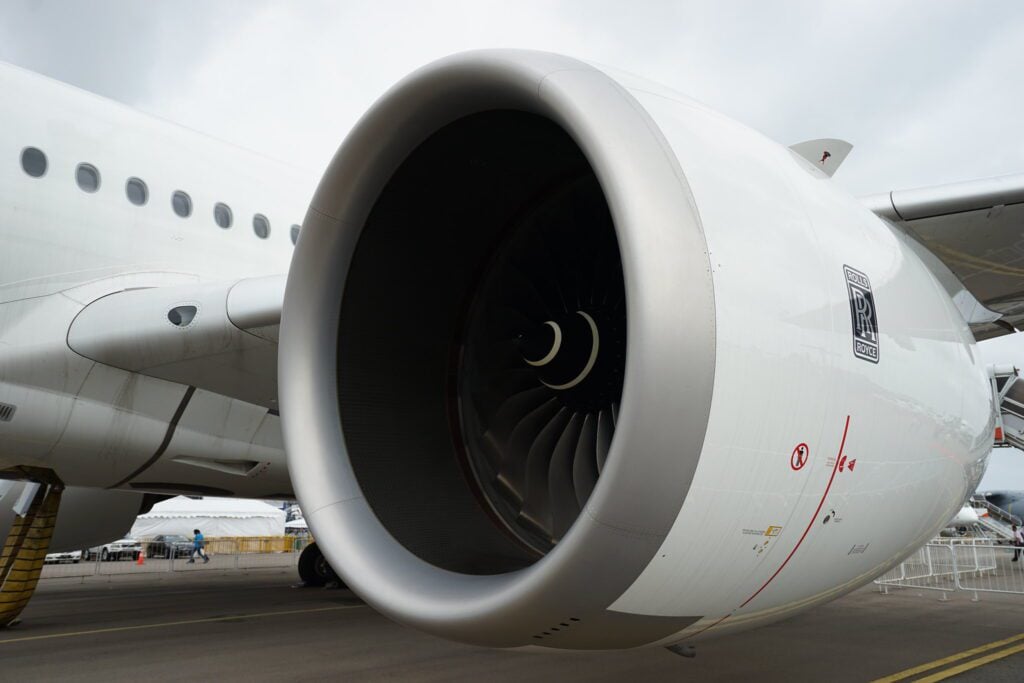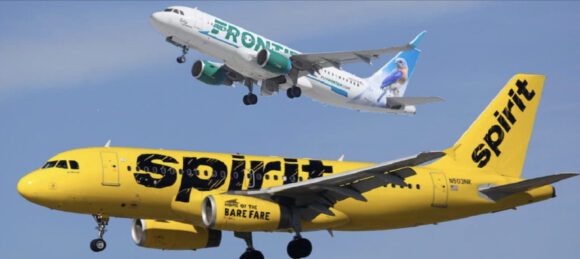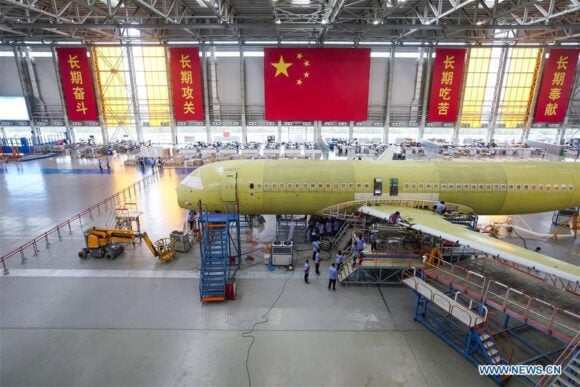
Photo: Rolls-Royce
Rolls-Royce published its H1 2025 results on July 31, 2025, and updated its full-year outlook, bumping up the range of its underlying profit and free cash flow. The new guidance was issued despite the company recognizing “a challenging and uncertain external environment.”
Rolls-Royce ended the six months with revenues of £9 billion ($11.8 billion), with operating profit margin climbing to 19.1%, compared to 14% in H1 2024. The company’s H1 2025 profit was £4.4 billion ($5.8 billion), a massive jump from H1 2024’s profit of £1.1 billion ($1.4 billion).
The civil aerospace segment performed well during the six months, growing its underlying revenue by 17% YoY to £4.7 billion ($6.2 billion). The segment’s underlying operating profit of £1.2 billion ($1.5 billion) reflected strong large engine aftermarket performance, net contractual margin improvements, and higher spare engine profit, according to Rolls-Royce.
In H1 2025, the British company secured orders for 349 large engines, improving its gross book-to-bill ratio from 2.3x in H1 2024 to 2.9x, with the Trent XWB-97, powering the Airbus A350-1000, and the Trent 7000, powering the A330neo, being the best sellers during the period. Rolls-Royce highlighted recent orders by AviLease, Riyadh Air, STARLUX Airlines, and VietJet.
Rolls-Royce delivered 122 commercial large engines, two more than in H1 2024, with another 23 large spare engines being handed over to its customers. Shop visits increased by 12% YoY, with large engine shop visits growing by 22 to 217.
However, the engine maker warned that as of June 30, 2025, Trent 1000 onerous contract provisions could be subject to change in estimates, with its forecasted estimate of shop visit capacity potentially being impacted by prolonged supply chain challenges and other factors. “If forecast increases in shop visit capacity are not achieved, this could have the impact of reducing planned output of engine overhauls,” Rolls-Royce said.
The company added that a 15% reduction in Trent 1000, which is one of the two engine options for the Boeing 787 aircraft family, output in H2 2025, thus resulting in the delayed incorporation of modified parts into the current 787 fleet, could lead to a charge of between £30 million ($39.6 million) and £50 million ($66 million) during the year.
In June, regulators, including the European Union Aviation Safety Agency (EASA) and the Federal Aviation Administration (FAA), certified the improved high-pressure turbine (HPT) blade for the Trent 1000, which “will more than double the time on wing [TOW] of the engine.” The company added that it remains on track for further improvements on the Trent 1000 and Trent 7000, delivering another 30% TOW improvement by the end of 2025.
Rolls-Royce also highlighted that its strategic initiatives include improved commercial terms and lower costs across widebody and business jet contracts and the TOW improvement program. Its current estimates point to an 80% TOW upgrade “on average across modern Trent engines by 2027,” and it has been progressing well, according to the engine maker. In May, the Trent XWB-84EP variant, which improves fuel consumption by more than 1% compared to the baseline XWB-84, powering the Airbus A350-900, entered into service.
The company updated its full-year underlying operating profit guidance from between £2.7 billion ($3.5 billion) and £2.9 billion ($3.8 billion) to between £3.1 billion ($4 billion) and £3.2 billion ($4.2 billion), despite slightly lower expected operating profit in H2 2025 due to lower net contractual margin improvements, higher original equipment (OE) deliveries, and higher maintenance, repair, and overhaul (MRO) invesment cots in its civil aerospace segment.
Free cash flow is now expected to be between £3 billion ($3.9 billion) and £3.1 billion ($4 billion), compared to the previous guidance of between £2.7 billion ($3.5 billion) and £2.9 billion ($3.8 billion). The guidance includes the expected £150 million ($197.9 million) to £200 million ($263.9 million) charge “related to the aerospace supply chain.” While Rolls-Royce said its actions resulted in improvements in parts availability, challenges should persist in 2025 and 2026.
Views: 228



